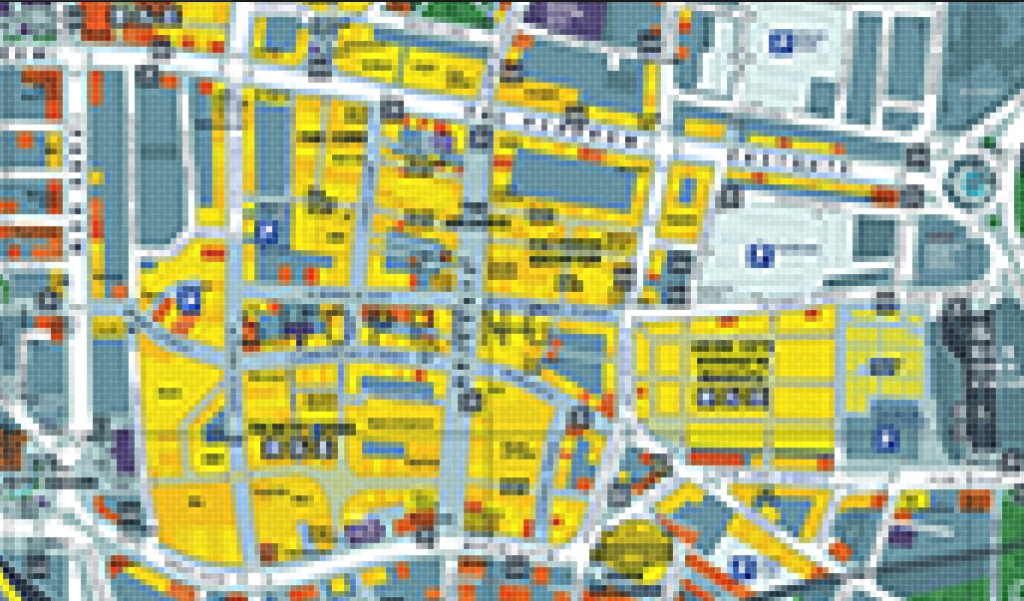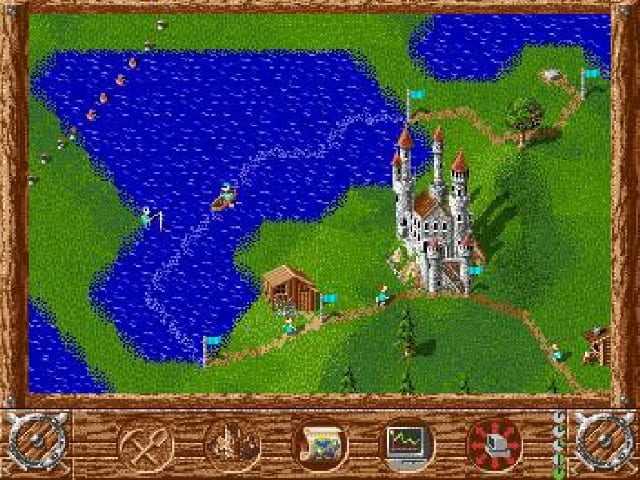maps
How detailed is your Wado map?

How confident are you about what you know of your system, the discipline you have chosen to study? Are you comfortable with the information you currently have to hand? Do you think you understand the roadmap of that developing knowledge, and is its trajectory obvious and predictable?
Okay, so, I accept that any Wado practitioner reading this might well be at very different points in their journey; some may be just beginning their study, others might be senior practitioners with many years behind them, but the ideas I am going to put forward I am fairly sure would benefit all – or at least stop and make you think. That’s the plan anyway.
Maps.
I am going to start with the broader idea, something I heard a little while ago. There is a theory that we all keep a complete map of the world within our own heads – a personal hardwired version like Google Satellite, Street View and Maps. When I first heard this, I was sceptical.
While I am fully aware that the human brain is perhaps the most complex thing on the planet but really this seemed a bit too far-fetched. But, it is true. That mess of grey matter that sits between our ears that has no awareness of itself outside of its own input devices – our senses, can really do all that, and more!
This amazing mapping, navigation device does not just include places, it also acts as our own personal encyclopaedia, with just about everything there is to be referenced. I use the word ‘referenced’ in a very deliberate way because the reality is that ‘references’ are about all we get.
To explain; while we have this map/encyclopaedia in our head most of this information is patchy and, in many cases, extremely low-resolution. The truth is, we have low-resolution representations of the majority of things we think we know.
Examples:
- Ask yourself about a random country in the world; say, Vietnam? Can you point to it on a map? Probably, but what else can your personalised encyclopaedia tell you? History, culture, language, currency? Unless you know the country very well through direct experience your knowledge will be sketchy, very low-resolution.
- Another couple of words; ‘Steam Train’. To communicate your understanding of this mode of transport, you might draw me a picture of a steam train, complete with funnel and wheels and a cab, all very ‘Thomas the Tank Engine’ – but unless you are an insanely enthusiastic trainspotter with qualifications in engineering and skills in mechanical draughtsmanship, I am not going to be convinced that you really understand a steam train, it will be extremely low-resolution.
Okay, so there are things we might be VERY knowledgeable about (or THINK we are), but the reality of our ‘wired-in’ intelligence and retrieval system (brain) is that it is in a state of constant update, or at least it should be. The truth is that (hopefully) more depth of information is being added and redundant (false) files are being deleted or replaced and new entries or categories are being added.
In some areas, people actually choose not to update their maps and files, this is often found when people become entrenched in areas like politics. Clearly, individuals can be so profoundly tribal in their political beliefs that even in the face of irrefutable evidence they will argue that black is white. But that’s their problem.
How about Wado (or any martial arts system)?
All of the above can be applied to our understanding of Wado karate.
I think it’s a case of being totally honest with yourself; particularly those who have been on this pathway a long time. Come on, do you really believe the same things that you did twenty years ago? How have your files been updated?
An example:
I came to the conclusion a long time back that just about everyone I knew in the martial arts continued their training for completely different reasons than those they started with. It might have been that they initially wanted to build confidence; they were fearful about their ability to protect themselves; but then, over time, their maps changed, their references became more sophisticated, more nuanced and they found something new, something of substance. I can’t get into describing what that is in this post, I don’t have the space; (in some ways I explored this idea in my blog post ‘Martial Arts training and the value of finding your Tribe.’).
Your Wado map.
For every student of Wado karate your initial ‘map’ is usually found in the pages of your syllabus book. This map expands as you move through the grades. Although, I must say, the reality is, it’s not an easily accessible map because it is mostly written in a different language.
But it would be naïve to assume that when we have completed the book we have mastered the system, it doesn’t work like that. The syllabus is a very low-resolution representation of the system; really, it’s a loose framework designed for convenience. In addition, ‘knowing’ the book, with its Kihon, Kata and Kumite doesn’t guarantee you can actually do it; and doing it doesn’t mean you can apply it. Imagine a musician who can read sheet music but can’t play an instrument, or who can play the music accurately but cannot improvise!
The downside of the syllabus book.
In Wado I don’t think reliance on the syllabus book is particularly helpful; it’s a pretty poor map. For me it’s too linear. For systems other than Wado it might easily describe the structure in a straightforward and accurate way, but within Wado karate it only takes you so far in understanding the true nature of this very unique Japanese Budo system. In fact, I would go so far as to say that if the book is the only model/access route, it will ultimately lead you down a dead end. [1]
A different map.
In some of my more recent teaching seminars I have presented a completely different map; a pictorial diagram that I think enables Wado students to navigate a more useful and meaningful way of understanding Wado – but a blog post like this is not the place to share this idea; besides, it is still a work in progress, as it should be. [2]
Expanding the map or increasing the resolution?
I think it is too easy to misread what I mean by developing or expanding the map. I don’t think that the Wado map should be seen as a kind of growing, territorial colonialisation, similar to a video game like ‘The Settlers’ or ‘Minecraft’ where from a tiny localised centre you keep occupying new territory and building new structures; that would be like adding extra pages on the end of the syllabus book.

To give a concrete example: Otsuka Sensei was quite content with the idea of nine core solo kata, anything beyond the apex kata of Chinto was classified as ‘extra’. [3]
Paired kata are perhaps another story. If you take them on face value, they are legion! But to focus on their bewildering number is perhaps missing the point.
I speculate that with the paired kata there is a hidden map lurking beneath the seemingly complicated map which features, for example; the ten Kihon Gumite, the thirty-six Kumite Gata, twenty-four Ura no Kumite and all the rest. The clue is when you acknowledge the reality that none of these paired kata contradict the core principles, and it is these core principles that are the real map, the one skulking underneath, and, in content, the ‘Principle Map’ is not such a huge numerical challenge.
The most valuable approach is not necessarily to expand the territory, but to increase the resolution. The territory might well push beyond its boundaries but only in a natural, unforced way, an organic by-product of more defined and focussed examination. The real payback is in the more granular exploration of areas you already think you know.
‘Low-resolution’ has its uses.
Low-resolution thinking is natural to us, it’s the very basic of what we needed to survive and has been with us for tens of thousands of years. But what might have been paramount for hunter-gatherers has now slipped down our list of priorities – I mean who needs to clutter up their thinking about what they might have had for breakfast when they are being chased by a sabre-tooth cat? A boost of adrenalin and the most basic info about an escape route should be enough!
What does ‘increasing the resolution’ mean for your Wado?
Let me start with what it does NOT mean:
- It does not mean knowing more and more about less and less.
- It does not mean you become a slave to detail, which, if taken to its extreme can result in you looking like an obsessive dilettante, all ‘head knowledge’ and no practical/physical skills. [4]
- It does not limit your thinking by allowing you to assume you have it all pinned down. Actually, the reverse should happen; your mind continues to expand.
What it DOES mean is:
- The more granular your understanding the more you appreciate the relationships between the various parts of your Wado map, the underpinning logic.
- This increased resolution enhances your creativity.
- If approached with humility, you begin to realise how little you know, or how things you thought you knew might have been wrong.
How to adopt a ‘granular’ approach to something you thought you knew.
As an example; never, never, never underestimate or dismiss Kihon, I say that because if you take something like the action of Junzuki, this single technique taught at the beginning of your training reveals so much more depth. Why do you think that no matter how many years you have been training you never leave Junzuki behind, you never transcend it? It’s always a work in progress.
But I guess you expected me to say that.
Another example: Take something like the role of ‘Uke’ in paired kata… it took me far too long to realise that Uke is not a mere stooge for the person performing the prescribed technique. Uke has more say in the conversational process and this ‘conversation’ continues all the way to the end of the kata.
The double-edged sword.
I left this part till the end, but it is incredibly important. Essentially, having knowledge in your head is no good on its own. For it to be given any form of concrete real-world potency, the other form of ‘knowledge’ must accompany it; that is the absorption of the technique into your body, to borrow someone else’s rather excellent description; it must be so deeply engrained that it stains your very bones!
Tim Shaw
[1] Yes, we have a syllabus book in Shikukai, and yes it has its uses as an outline, a catalogue of techniques and requirements for grading, but that’s it.
[2] I have been toying with the idea of sharing this type of material through a subscription service like Substack, but I haven’t made my mind up yet.
[3] Notice how the kata Suparinpei dropped off Otsuka Sensei’s map very early on. Also consider Otsuka’s early development of Wado and look at the list of techniques produced for the official registration in the 1930’s; it’s a kind of map, but what was its objective? Who was the map really for?
[4] ‘Dilettante’, I like this much underused word. Definition; ‘A dilettante was a mere lover of art as opposed to one who did it professionally.’
Photo credit: The Settlers screen image courtesy of: https://www.sockscap64.com/games/game/the-settlers-2/